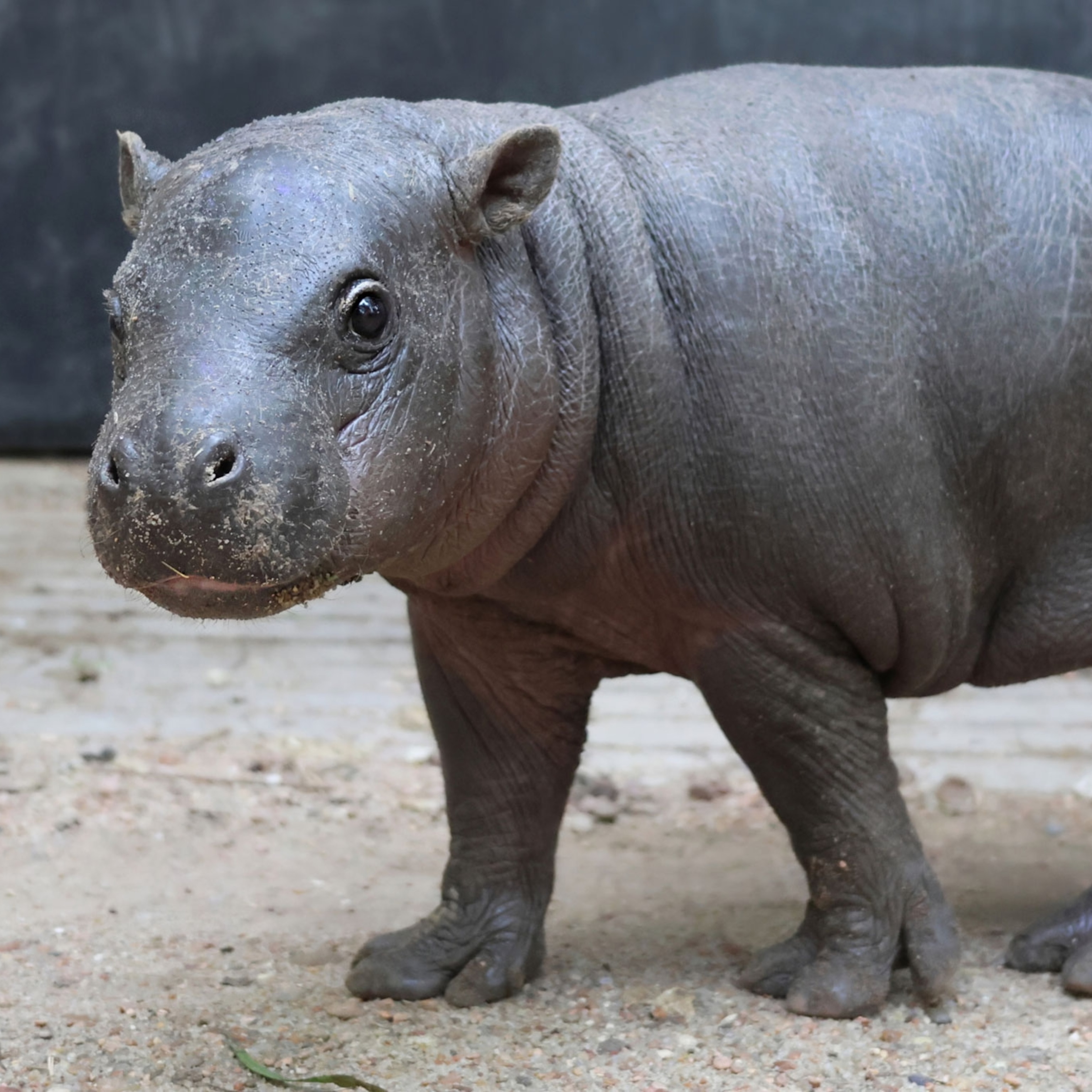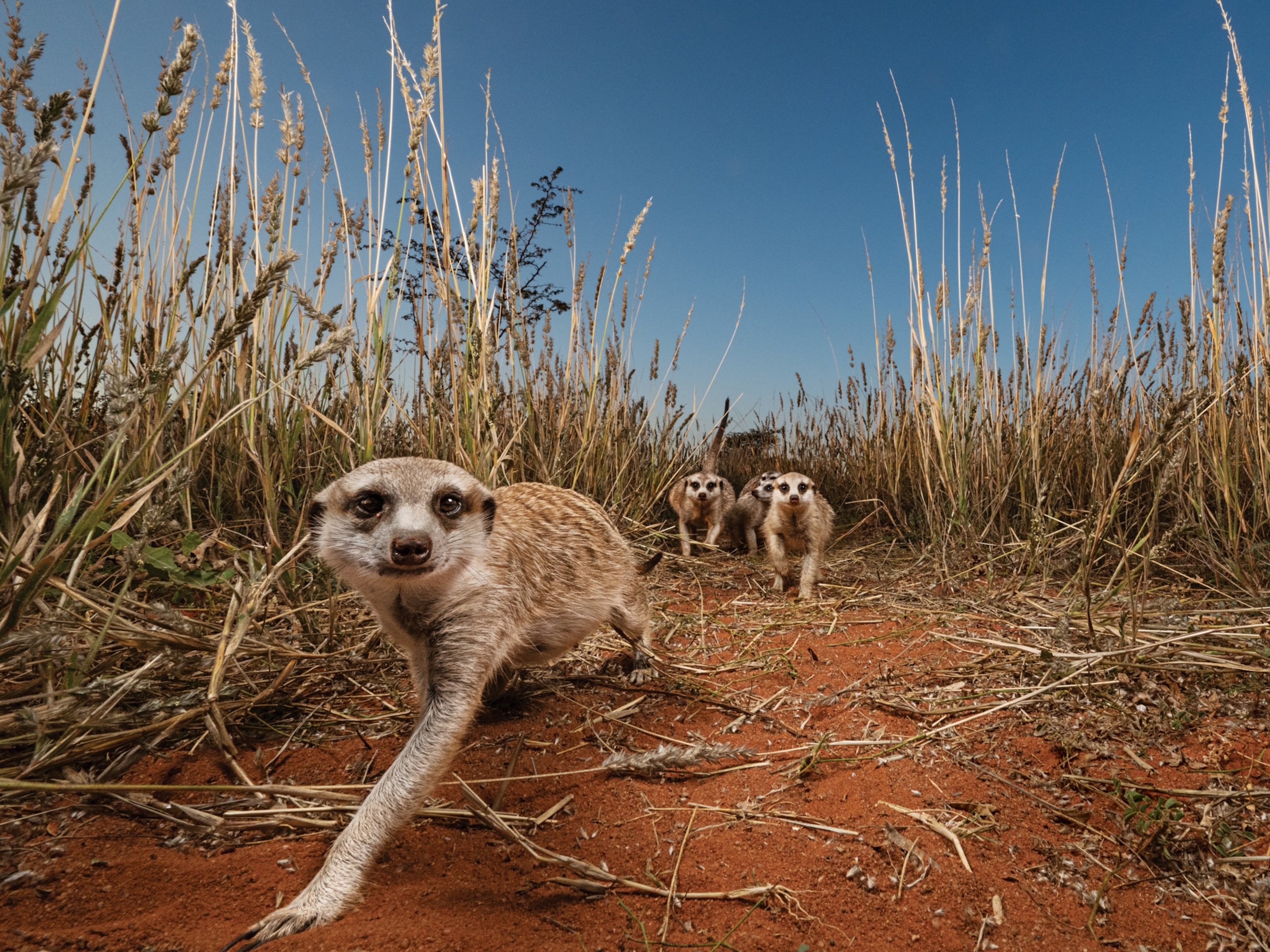A male musk ox can weigh up to 800 pounds and charge at speeds over 30 miles per hour. During the breeding season, these shaggy, Arctic Circle behemoths crash into each other face-first and then stab their opponents with their huge, sharp horns.
What’s more, over the course of their 10- to 12-year life-spans, a single male musk ox might rack up something like 2,100 hits to the head.
All of which begs the question, how do musk oxen survive these onslaughts without turning their brains into mush?
“People have always just assumed that animals that headbutt, like musk oxen and bighorn sheep, are somehow immune to head injuries,” says Nicole Ackermans, a neuroscientist at the Icahn School of Medicine at Mount Sinai in New York. “Like they have magical horns, or something.” (Read about five times when evolution ran in ‘reverse.’)
But when Ackermans started reading through the scientific literature, she discovered that no one had studied whether these North American herbivores suffer brain damage from their head-banging lifestyles. So she and her colleagues acquired the brains of musk oxen and bighorn sheep from a combination of field expeditions, donations from subsistence hunters, and captive research herds.
“We found a specific pattern in all of our specimens that looked really similar to early chronic brain trauma in a human,” says Ackermans, who led a recent paper on the findings, published in the journal Acta Neuropatholgica.
The new research could be critical for gaining a better understanding of brain injuries in humans, says Ackermans, because bovids (animals such as oxen and sheep) have folded, wrinkly brains that are more like ours than, say, mice, whose brains are smooth.
It’s also evidence that evolution can lead a species down surprisingly self-destructive paths. And in this regard, the musk oxen are far from alone.
‘Just don’t die’
For their research, Ackermans and her colleagues stained the brains of three musk oxen and four bighorn sheep with biomarkers. These chemicals can illuminate patterns of traumatic brain injury commonly associated with human conditions, such as Alzheimer’s disease and chronic traumatic encephalopathy, or CTE. In this case, the scientists were searching specifically for something known as the tau protein.
“When your neurons get damaged, whether it be through aging, genetic problems, or mechanical impact, they get ripped, and this protein breaks down and forms into clumps,” Ackermans explains. “And if you see them in specific patterns, that’s how you can tell whether it’s just a normal brain, or aging, or Alzheimer’s, or potentially trauma.”
Unfortunately, the biomarker method didn’t work as well on the sheep brains, though they did show signs of tau buildup. The musk oxen brains, however, lit up with tau like a Christmas tree.
At first blush, it might not make sense that a natural behavior, such as headbutting, could be so harmful. But it’s the long game that matters, Ackermans says. (Read how climate change is causing musk oxen to freeze to death.)
“Each year, a musk ox will headbutt many times, but if they reproduce even once successfully, that’s kind of all you need,” she says. “The thing that’s encouraged, evolutionarily, is just don’t die.”
It probably helps that male musk oxen live less than 15 years and females live 15 to 23 years, she says. So even if tau proteins are building up throughout the animals’ lives, they may never accumulate to a point where they can cause conditions such as Alzheimer’s or other dementias.
“Their lives are not that complicated,” says Ackermans. “So potentially, they just survive long enough to do what they need to do.”
And even if they did develop those conditions, who would know? “There’s no behavioral scale for musk ox. So we can’t say that they’re not feeling a little forgetful,” she says. (Read how animals can get dementia.)
Next, Ackermans wants to study various species of woodpeckers to see if they exhibit brain trauma from their head-banging behaviors. The only other study to look at the birds’ brains found some evidence of tau, but “it wasn’t really in any specific pattern,” she says.
Mating to death
In some ways, musk oxen are an interesting parallel with certain marsupials, says Diana Fisher, a mammal ecologist at the University of Queensland School of Biological Sciences in Australia.
Small and carnivorous, antechinuses are a genus native to mainland Australia and Tasmania. In recent years, they’ve made headlines for the way the males practice semelparity—or a single burst of reproductive output, followed by programmed death. Antechinus females can live two to three years or more. But the males rarely last more than 11 months. (Read about five animals that mate themselves to death.)
“They have a very frantic mating season,” says Fisher. Breeding bouts can last 12 to 14 hours, and afterward each male will try to mate with as many other females as he can—which leads to his demise.
“The collagen in their skin disintegrates, their gut disintegrates, and they get internal bleeding,” says Fisher. “They become very susceptible to parasites and diseases, and their immune system fails.” In a matter of weeks, they’ll be dead.
“This is all pretty unusual for mammals,” says Fisher, which tend to survive long enough to experience multiple mating seasons.
Suicidal reproduction is more common in insects, fish, plants, and arachnids: When another Australia native, the redback spider, mates, the male will place himself into the female’s mouth.
“That dissuades the female from further mating,” says Fisher, “because she’s busy eating.”
Self-destructive insects
In large, social insect colonies, a similar but slightly different dynamic plays out.
When a European honeybee stings a soft-skinned attacker, such as a bear, it dies when its stinger lodges in the victim’s skin. An exploding ant may rip its abdomen in two while defending its nest from attackers. And in some termite species, elderly workers can turn themselves into suicide bombers.
But how does killing oneself make sense, evolutionarily speaking?
“Easy,” says Thomas Seeley, a biologist at Cornell University and author of The Lives of Bees, in an email. “Workers achieve genetic (evolutionary) success not by reproducing themselves, but helping their mother, the colony’s queen, do so.” (Learn why insects are disappearing at an alarming rate.)
“One form of this help is colony defense,” he explains.
"Some researchers call this a ‘superorganism’,” says Alice Laciny, an entomologist who works on exploding ants at the Natural History Museum Vienna, in an email. “So an ant colony or bee hive is more like one large animal, with the queen representing the reproductive organs. The minor workers are numerous and only need small amounts of resources to rear, so they are similar to the body's cells in a way.”
As with the musk oxen, what appears to us as violent, self-destructive behavior by the worker ants seems to be worth the cost, so long as it leads to reproduction.
“In this system, protecting her queen and sisters, if necessary even by self-sacrifice, is the way an ant worker can protect and pass on her genes,” says Laciny.
A mother’s ultimate sacrifice
Another form of sacrifice in the animal kingdom is the lengths to which some mothers will go to give their young a fighting chance.
After they’re born, some species of legless amphibians known as caecilians literally eat their mother’s top layer of skin as a first meal. And African social spiders take this one step further, with some females allowing their young to practice matriphagy—or the killing and eating of their own mother. (Watch baby spiders eat their mother alive.)
Giant Pacific octopuses may be the ultimate self-sacrificing mothers. Females can hold vigil over their eggs for an incredible four years—during which time they don’t even eat.
“Inevitably, the females deplete their entire body reserves and die while guarding the eggs,” says Fisher.
"You do feel sorry for them, but that's how a lot of species get the best offspring success in the next generation.”









